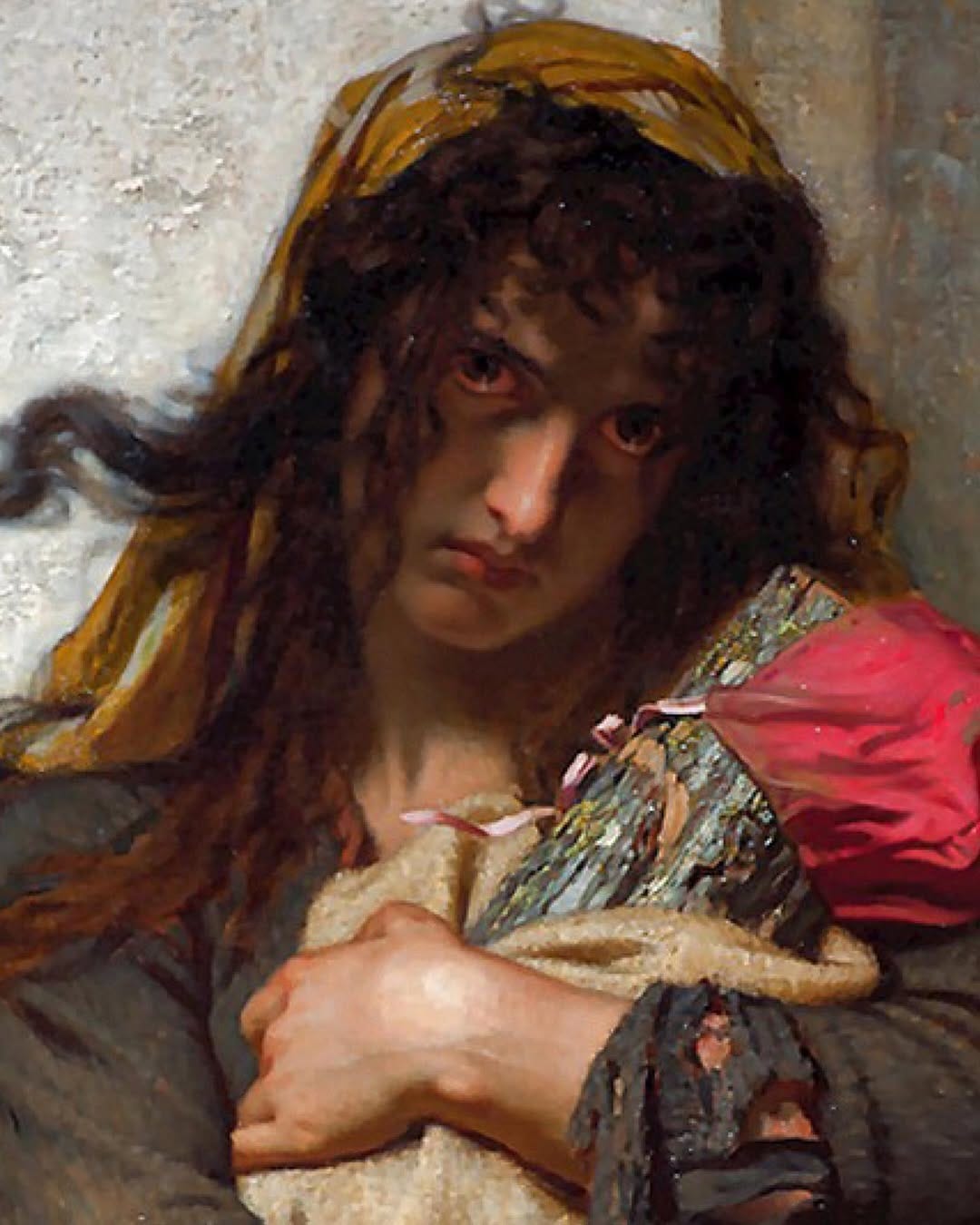HUGUES MERLE - THE LUNATIC OF ÉTRETAT, 1871
This is a impressive oil-on-canvas painting that depicts a barefoot, unkempt woman seated by a well in a desolate outdoor setting, clutching a wooden log wrapped in fabric as if it were a baby. The woman's intense, anguished expression and red eyes—marked by the visible sclera of her eyes (a condition called "sanpaku")—convey profound emotional and psychological distress. Her tattered clothing, disheveled hair, and the landscape of Étretat, rendered in muted tones, emphasize her isolation. The log, tied with a bonnet and cradled tenderly, can be interpreted as a surrogate for a lost child or an unfulfilled longing for motherhood.
The political context of 1871 profoundly shaped the interpretation of this artwork. France was reeling from its defeat in the Franco-Prussian War (1870–1871), which led to the loss of Alsace-Lorraine, the fall of the Second Empire, and the violent suppression of the Paris Commune. This period of national humiliation, economic hardship, and social upheaval provides a critical lens for understanding the painting’s themes of grief and despair. The woman’s anguished expression and her cradling of a wooden log is a metaphor for France’s collective trauma. The log, wrapped in cloth and tied with a bonnet, might symbolize the loss of national pride or territory, particularly Alsace-Lorraine, often personified as a “child” taken from the motherland. Her disheveled appearance and isolation mirror the fractured national identity and societal dislocation following the war.
What is particularly intriguing is how Merle, often overshadowed by peers like Bouguereau, used this work to channel the Romantic fascination with extreme emotional states, prefiguring later psychological explorations in art. The painting’s ambiguity—leaving viewers to question whether the woman’s “madness” is clinical, symbolic, or a societal construct—shows Merle grappling with complex themes of mental health and human suffering at a time when such topics were rarely depicted with such empathy in Academic art. This bold choice, made amidst national crisis, reveals Merle as an artist capable of transcending his usual style to capture the zeitgeist of a wounded France.




